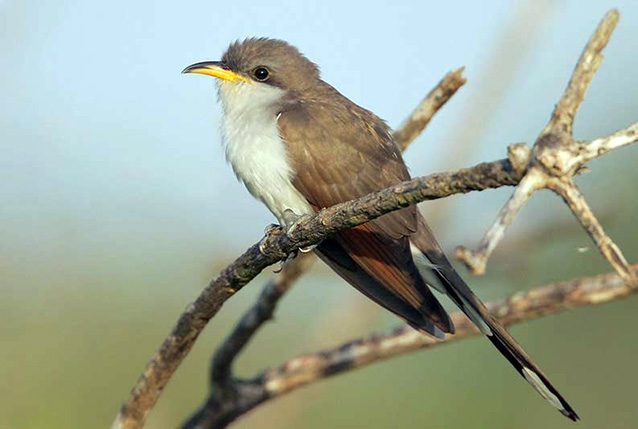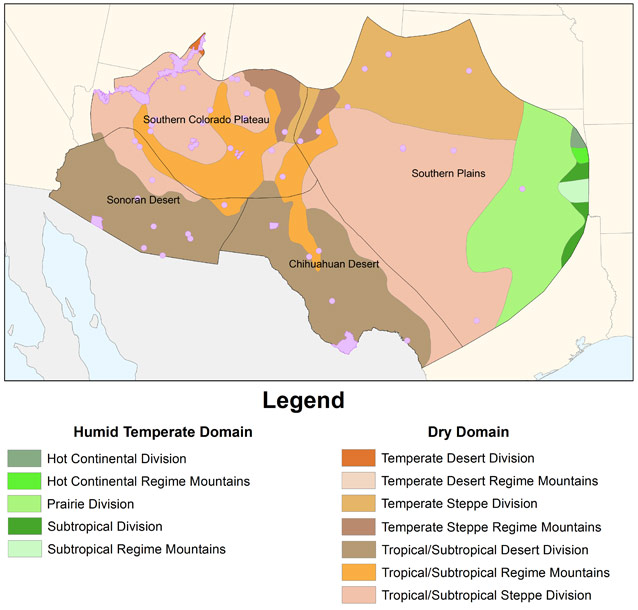The various unique ecosystems of the American Southwest support an especially high diversity of bird species. With so many species represented, the birds' ranges and life histories are similarly diverse.

Photo by Greg Lavaty
Introduction
Birds are a conspicuous component of many ecosystems. They have high body temperatures, rapid metabolisms, and occupy high trophic levels. Because they can respond quickly to changes in resource conditions, birds are considered good indicators of ecosystem health. In other words, changes in bird populations may indicate changes in the biotic or abiotic components of the environment upon which they depend. In addition, birds are highly detectable compared to other vertebrates, and they can be efficiently surveyed with the use of several standardized methods. Birds also come under the legal mandates of the Migratory Bird Treaty Act and, in some cases, the Endangered Species Act (ESA).
Monitoring changes in bird population and community parameters can be an important component of any comprehensive, long-term monitoring program. For example, some studies suggest that bird reproduction rates vary with habitat quality, leading to higher densities in superior habitat (Bock and Jones 2004). However, perhaps the most compelling reason to monitor birds is that birds themselves are inherently valuable. The high aesthetic and spiritual values that humans place on native wildlife are acknowledged as part of the National Park Service (NPS) mandate: “to conserve . . . the wild life therein . . . unimpaired for the enjoyment of future generations.” Birdwatching, a popular, long-standing recreational pastime in the U.S., provides evidence of the value people place on birds, and it forms the basis of a large and sustainable industry. This is especially evident in the American Southwest, where the high diversity of birds creates some of the best birdwatching opportunities in the country.
Although several large-scale programs, such as the Breeding Bird Survey, have been initiated in the U.S., they are often insufficient to document local changes in bird populations at the park and network scales. Monitoring birds is especially critical given population declines for some species in recent decades, especially neotropical migrants. NPS I&M bird monitoring programs will compliment these other efforts by providing managers with information on changes to bird populations in their parks and protected areas.
Distribution and Life History

Hundreds of species of birds occur in the American Southwest. For example, the Sonoran Desert supports more than 350 bird species, and the northern portion of the Chihuahuan Desert supports more than 450 bird species. In addition to there being a large number of species in the Southwest, there are a multitude of resources that describe the distribution and life history of American birds. Thus, rather than attempting to duplicate such information here, we refer readers to some of these alternative sources. Our intention is not to endorse any particular source, but to identify some of the more common resources for distribution and life history information. This information on sources is presented in the last section of the overview, entitled “Sources of Distribution and Life History Information.”
Additionally, lists of birds that occur in particular parks in the American Southwest (see map above), and elsewhere, can be found at the following NPS website (https://irma.nps.gov/NPSpecies/). Also of interest, Partners in Flight (PIF) has produced regional and state Bird Conservation Plans (BCPs) that target bird species and habitats for conservation. These lists and plans can be found at (http://www.partnersinflight.org/conservation_plans/default.php).
Prepared by Patty Valentine Darby, Southern Plains Network Inventory and Monitoring Program, 2009.
Part of a series of articles titled Birds of the American Southwest.
Last updated: March 3, 2015
